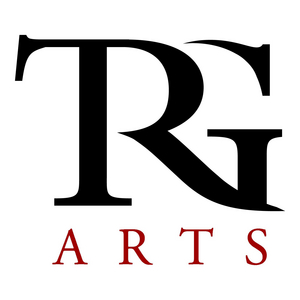TRG Arts Study Reveals Majority of Performing Arts Organizations Are Pushing for In-Person Return Autumn 2021
The study reveals arts and culture organizations' plans for creative alternative venues by country, genre, and month.

U.S. arts and culture leaders are taking a pragmatic approach to planning live, in-person performances in their primary performance venues as only 42% of U.S. organizations anticipate performing in primary venues before July 2021, according to a new study released today by international arts management consultants TRG Arts. 55% of Canadian organizations surveyed plan in-person performances in their primary venues prior to July. The study, "Arts and Culture Comeback Planning: January 2021," is the fourth in a series of studies on the plans of arts and culture organizations in the U.S. and Canada since the COVID-19 pandemic.
Compared to the September 2020 comeback study, these estimates reflect additional delays to a return to in-person performances. Canadian organizations have further delayed performance plans by an average of six months, while U.S. organizations are pushing performance returns back an average of 3.8 months. By genre, dance has the most significant delays compared to the September study, averaging an additional 10.5 months. Multi-disciplinary organizations report a delay of less than one month from their original September plans.
Of 104 organizations surveyed (91 in the U.S., 13 in Canada) from December 12, 2020 through January 12, 2021, organizations in the U.S. Southeast, Southwest, and South are the most optimistic, with a majority of responding organizations planning a return prior to July.
The study reveals arts and culture organizations' plans for creative alternative venues by country, genre, and month, including:
• 47% of respondents plan to offer paid performances in outdoor and alternative venues other than their primary performance space in 2021, with equal proportions of U.S. and Canadian organizations exploring these options.
• 67% of the organizations that plan to perform in alternative venues plan to do so prior to returning to in-person performances in their primary venues.
• 21% plan to program in alternative spaces after returning to their primary venue.
The January study also expands upon how many organizations are offering paid digital programs, as well as why and how effective these efforts are:
• 78% of organizations had introduced or planned to introduce paid digital programming, starting as early as April 2020.
• 86% of organizations began offering paid digital content in 2020, with half introducing paid content after October 1.
• Overall, the role of digital content distribution is shown to be a relational bridge rather than a revenue generator. The top reason organizations cited in offering paid digital programming was to remain relationally tethered to subscribers; this relational tether was the highest reason cited regardless of performance genre.
"The January comeback study shows there is light at the end of the tunnel, sooner in some regions and venues than others, but light nonetheless," said TRG Chief Executive Officer Jill Robinson. "The strategic planning, critical thinking and alternative programming that performing arts organizations have undertaken show remarkable professionalism and creativity that will enable them to continue the vital work they do in supporting the soul of their communities as well as the broader economy."
The full study of "Arts and Culture Comeback Planning: January 2021" is available at https://trgarts.com/blog/comeback-jan-2021.
Ongoing Evaluation
TRG Arts is continually studying the impact of COVID-19 on the resiliency of the arts and culture field, and has made several resources free and available to all.
• TRG 30, a weekly 30-minute webinar series of crisis counsel and best practices that attracts hundreds of executives globally each week: https://go.trgarts.com/TRG30.
• TRG blog for the latest on COVID-19 related topics: https://go.trgarts.com/Blog COVID-19 Sector Benchmark studies live transactional data from across the globe. It allows participants to compare their patron purchase trends to geographic-specific benchmarks and is intended to be used for arts advocacy and planning. Participating organizations can learn how their recovery compares to other similar organizations.
Visit: https://go.trgarts.com/benchmark
Comments
Videos

